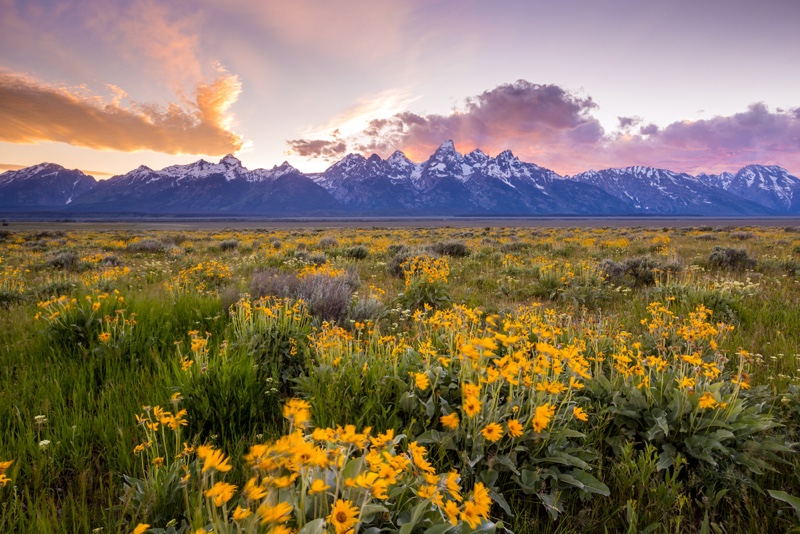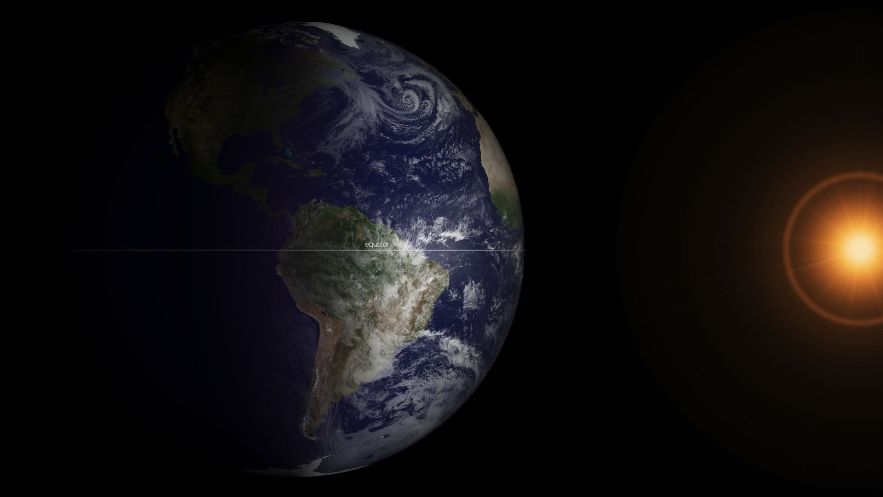Why 2016 Will Have the Earliest Spring Equinox Since 1896

If you're ready to see blooming flowers and sunny skies, it may help to know that this year's spring equinox will be the earliest to arrive in 120 years, largely because of an old rule governing leap years, experts said.
There are two equinoxes (taken from the Latin words aequus for "equal" and nox for "night") each year, marking the start of spring and fall. On these days, there are nearly equal amounts of daylight and darkness.
Usually, the spring equinox happens on March 20 or 21. But the 2016 spring equinox will happen during the very early hours of Sunday (March 20) at 12:30 a.m. EDT, making it the earliest spring equinox since 1896. [6 Signs Spring Has Sprung]
The reason why goes back to Pope Gregory XIII, who created the Gregorian calendar in 1582, according to the website EarthSky. Each year on Earth lasts 365.242 days, and the existing calendar in Gregory's time accounted for this fraction of a day by having most years be 365 days long, with leap years every four years, where were 366 days long.
But under this system, with one extra day every four years, the average length of a year was 365.25 days — still a hair longer than the actual length of a year.
And so Pope Gregory XIII declared that years ending in "00" should not be leap years unless they're also divisible by 400, EarthSky reported. That means that the year 2000 was a leap year, but the years 1700, 1800 and 1900 were not, and 2100 won't be either.

The 2000 leap year caused the March equinox to come about three-quarters of a day earlier than it did in the year 1900, EarthSky said. And ever since 2000, the spring equinox of each leap year has happened earlier than it did in the previous leap year. For example, the spring equinox happened at 2:25 a.m. EST in 2000, 1:49 a.m. EST in 2004, 1:48 a.m. EDT in 2008 and 1:15 a.m. EDT in 2012, according to TimeAndDate.com. (All of these spring equinoxes occurred on March 20).
Sign up for the Live Science daily newsletter now
Get the world’s most fascinating discoveries delivered straight to your inbox.
The trend will continue for every leap year until the end of the century. The spring equinox will happen at 11:50 p.m. EDT on March 19, 2020. Four years after that, it will happen even earlier, at 11:06 p.m. EDT on March 19, 2024.
The year 2096 will have the earliest March equinox of the century, occurring at 10:03 p.m. EDT on March 19, according to EarthSky.
However, because the year 2100 is not a leap year (thanks to the Pope's rule), the spring equinox will happen later that year, by about one-quarter of a day, EarthSky reported. So, in the year 2100, the spring equinox will happen at 9:01 a.m. EDT March 20, according to drik Panchang, a website about the Hindu calendar.
But don't break out the spring gear just yet. Though the equinox is the official start of spring, actual springtime weather varies by location. Plus, it's only springtime in the Northern Hemisphere.
"[The spring equinox] is great for those of us in the Northern Hemisphere, but it also marks an early start to winter for those in the Southern Hemisphere," Paul Cox, an astronomer with Slooh, an organization that connects the public with astronomy, said in a statement.
In fact, Slooh astronomers and The Old Farmer's Almanac will celebrate the spring equinox with live solar views from the Prescott Observatory in Arizona this weekend. They will also show images of the aurora borealis, as seen from the northern latitudes, and discuss the historical and modern cultural importance surrounding the spring equinox.
Go to The Old Farmer's Almanac's website at 5 p.m. EDT on Saturday (March 19) to see the live stream. Viewers are encouraged to ask questions on Twitter by using @slooh.
Follow Laura Geggel on Twitter @LauraGeggel. Follow Live Science @livescience, Facebook & Google+. Original article on Live Science.

Laura is the archaeology and Life's Little Mysteries editor at Live Science. She also reports on general science, including paleontology. Her work has appeared in The New York Times, Scholastic, Popular Science and Spectrum, a site on autism research. She has won multiple awards from the Society of Professional Journalists and the Washington Newspaper Publishers Association for her reporting at a weekly newspaper near Seattle. Laura holds a bachelor's degree in English literature and psychology from Washington University in St. Louis and a master's degree in science writing from NYU.










